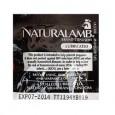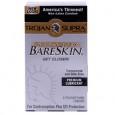When we talk about condoms word latex immediately comes to our mind. Most of the condoms are still made from latex. However, things are changing fast as now factories can produce various synthetic materials that are superior to latex in their physical properties.
Another reason why industry started considering non-latex materials is the rise of allergies to latex [1].
Latex is a widely used material. It may be used to produce surgical gloves, condoms, rubber bands, shoe soles, may be added to paints and so on. Widespread use of latex means a higher risk of allergies to the substance due to frequent exposure to it.
Latex is a fluid from natural sources/plants that coagulates on oxidization. Rubber plant is a well-known source of latex. Not a long time back most of the car tires were made using latex from rubber plant/tree.
However, now almost all tires are made of synthetic rubber as it is far superior. So why not substitute latex in condoms with superior synthetic materials?
One of the reasons why the industry has been so slow to adopt new synthetic materials in healthcare is due to more stringent regulatory norms. Unlike tires or other products, companies need a long time to prove the safety of products that come in contact with skin and sensitive body parts.
Fortunately, FDA and other competent bodies have approved such materials like polyisoprene for producing condoms.
What is polyisoprene?
It is a synthetic version of sap produced by Hevea tree. It means that although it is synthetically produced, it is quite close to a naturally occurring thing. There are many benefits of producing rubber synthetically.
Synthetically produced materials are free from undesirable impurities, they are also free from other harmful elements. Synthetically made polyisoprene does not contain large protein molecules that are frequently involved in severe allergies.
All this means that you get a condom that is quite similar to the latex condom in feeling, yet, it is safer in many ways [2].
Pros and cons of polyisoprene condoms
Polyisoprene condoms are a relatively new thing. One of the first FDA approved polyisoprene condoms for pregnancy, and sexually transmitted diseases prevention were introduced in 2008. It is true that one can even produce condoms without FDA approval.
However, a nod from the FDA is like a guarantee that it works as stated. It takes years of hard work, scientific studies, clinical trials to prove to the FDA that the material can help prevent pregnancies or sexually transmitted diseases (including HIV) [3, 4].
Polyisoprene condoms are produced in clean laboratory conditions; thus, they are way safer than latex-based condoms. Generally, condoms made from it are softer, better fitting, though they may be a little thicker.
Polyisoprene condoms may stretch better than latex condoms, and after stretching, they are also better in retaining their shape. Condoms made of polyisoprene are less likely to break [5].
Condoms made from polyisoprene are undoubtedly better than latex condoms, but they are also more expensive. However, they are not much expensive, and one can save by buying them in bulk.
Another, issue one may face with these condoms is that some people are very sensitive to changes and they need more time to get used to the new kind of material. Fortunately, most men will not feel much difference when using condoms made from polyisoprene.
Using polyisoprene condoms
Quite like latex based condoms, they help prevent unwanted pregnancies and save you from sexually transmitted diseases. It may be used for vaginal sex, oral sex, anal sex.
When having sex with condoms, some individuals prefer to use lubricants, especially when having anal sex. Here it is worth remembering that you should not use oil-based lubricants with these condoms.
Like latex condoms, polyisoprene becomes weaker on coming in contact with oils, thus chances of breakage increase.
Water-based lubricants and silicone-based lubricants are safe to use with the condoms made for this material.
A lot of people who have used these condoms for some time agree that polyisoprene condoms are more comfortable and stretchy when compared to latex or especially other materials like polyurethane.
Polyisoprene condoms brands
It is true that polyisoprene condoms are still not very common and if you decide to use them, you will have a lesser choice. However, considering the benefits of such condoms, the absence of allergic reactions, these condoms are worth giving a try.
Lifestyles SKYN
SKYN is one of the first companies to introduce polyisoprene condoms and remains one of the leading producers of such condoms. They have a choice of two types of condoms, classical and with extra lubricants.
Click here to check all SKYN variants and their sizes.
luckybloke
Durex Avanti Bare
One of the leading condoms brands in the world Durex has also started producing polyisoprene-based condoms.
Durex Real Feel Avanti Bare Polyisoprene Non-Latex Condoms can be bought in the supermarkets or online.
luckybloke
There is no doubt that latex based condoms are really good, they have stood the test of time. Most people find no reason to use non-latex condoms.
However, for some with allergies or other issues, using non-latex condoms is essential. Another reason for giving non-latex, polyisoprene-based condoms a try could be the dissatisfaction with latex condoms, for example with sensitivity level, strength, stretchiness, and so on.
References:
- Yah CS, Simate GS, Hlangothi P, Somai BM. Nanotechnology and the Future of Condoms in the Prevention of Sexually Transmitted Infections. Ann Afr Med. 2018;17(2):49-57. doi:10.4103/aam.aam_32_17
- C A. Allergic to Latex? You Can Still Have Safer Sex. Plan Parent Advocates Ariz. May 2012. http://advocatesaz.org/2012/05/02/allergic-to-latex-you-can-still-have-safer-sex/. Accessed February 19, 2019.
- Male Condoms | HIV Risk Reduction Tool | CDC. https://wwwn.cdc.gov/hivrisk/decreased_risk/barriers/male_condoms.html. Accessed February 19, 2019.
- Condoms for the prevention of HIV transmission. https://www.catie.ca/en/fact-sheets/prevention/condoms. Accessed February 19, 2019.
- Gerofi JP. Fatigue testing of condoms. Polym Test. 2009;28(6):567-571.





 Dr. Preet Pal Singh Bhinder is a physician (M.D. Medicine) with a specialization in diabetes (Fellowship in diabetes, Royal Liverpool Academy). He is a lifetime
Dr. Preet Pal Singh Bhinder is a physician (M.D. Medicine) with a specialization in diabetes (Fellowship in diabetes, Royal Liverpool Academy). He is a lifetime
“There is no doubt that latex based condoms are really good, they have stood the test of time. ”
oh fuck off! they are the only choice we have been given! they havent stood for anything except misery for most!
there was Lambskin :P